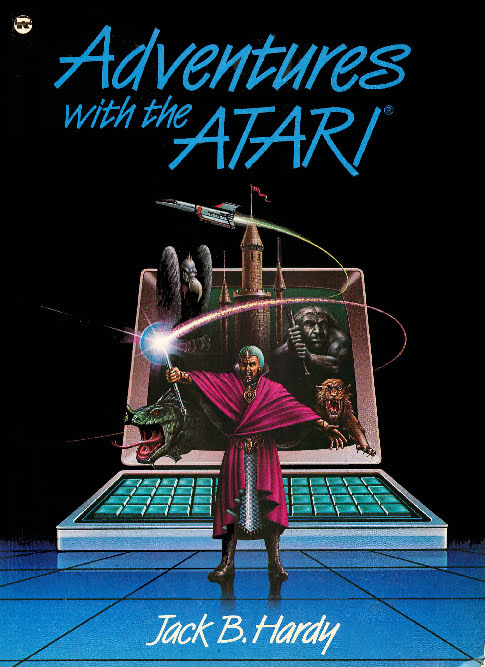#atari st art
Text
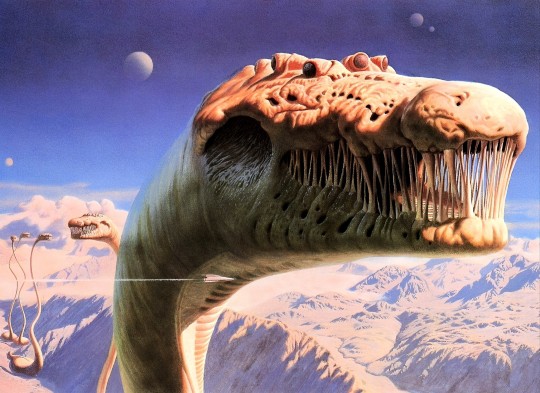
Cover artwork for Ork by the late British artist Richard Clifton-Dey. Psygnosis released Ork in 1991 for the Amiga and Atari ST.
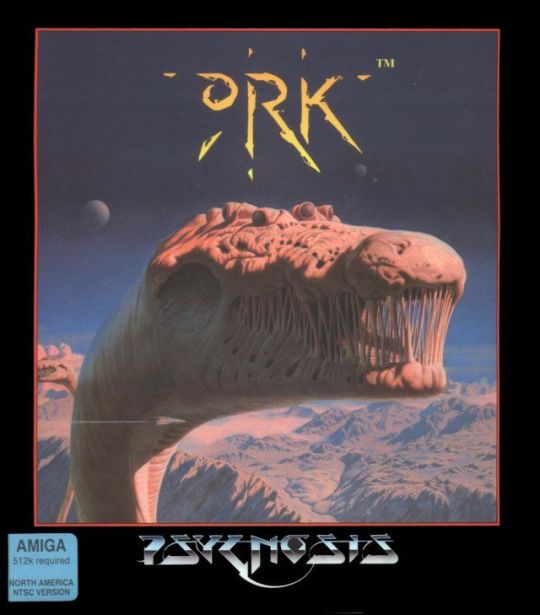
The artwork, entitled Behemoth's World, was flipped and zoomed in a bit when it was originally used a decade earlier for Blue Öyster Cult's 7th album Cultösaurus Erectus.
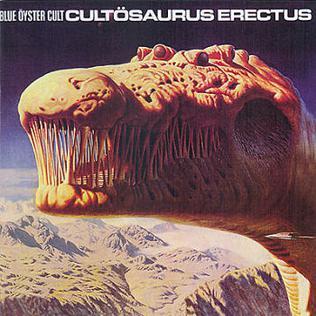
#Behemoth's World#Amiga art#Richard Clifton-Dey#Psygnosis art#ork#Blue Oyster Cult#Cultosaurus Erectus#Atari ST art
131 notes
·
View notes
Text

Retro Game Spotlight 098: Dungeon Master (1987)
Publisher: FTL Games
Platform: Atari ST
Designers: Doug Bell, Dennis Walker, Mike Newton
Box Art: David R. Darrow
Trivia: One of the Atari ST's best-selling games of all time, the award-winning Dungeon Master revolutionized the genre of 3D dungeon crawlers by being the first real time role-playing video game with a pseudo-3D first-person perspective and mouse control.
#Atari#Atari ST#FTL Games#Dungeon Master#video games#retro gaming#retro computing#Doug Bell#Dennis Walker#Mike Newton#box art#David R. Darrow#Retro Game Spotlight
13 notes
·
View notes
Text
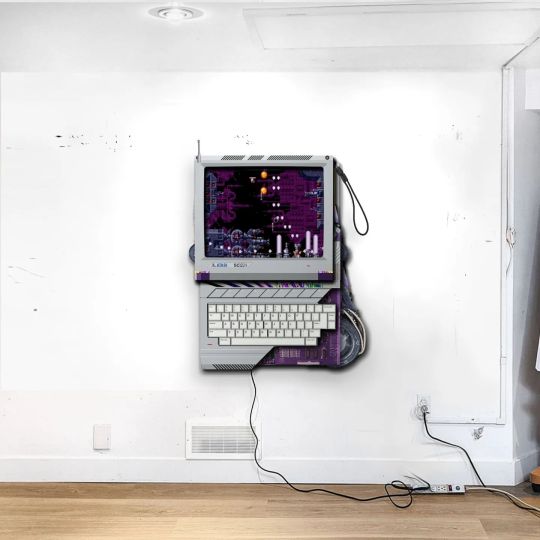
link
#connor.gottfried#Xenon 2 Megablast#Atari#Atari ST#Atari 520 ST#Xenon#Xenon 2#BitmapBrothers#1989#shootemup#retrogaming#future retro#vintagetechnology#classicgaming#1980s#pop art#contemporary art#art#design#color#style#video games#gaming#retro gaming
15 notes
·
View notes
Video
youtube
Back Cover to AI Art S2E16 - World Circuit
Older video games were notorious for back cover descriptions that have nothing to do with the game so let's see what a text-to-image generator makes of these descriptions. Season 2 sees an increase in art creations for each game up from 1 in the first season to 6 for the second season
1. Intro - 00:00
2. Back Cover and Text Description - 00:10
3. Creation 1 - 00:30
4. Creation 2 - 00:50
5. Creation 3 - 01:10
6. Creation 4 - 01:30
7. Creation 5 - 01:50
8. Creation 6 - 02:10
9. Outro – 02:30
World Circuit known as Formula One Grand Prix outside of the US is the first entry in Geoff Crammond's Grand Prix series of Formula One racing games, a series that had four instalments, running from 1991s World Circuit culminating in 2002s Grand Prix 4. World Circuit was released on the Amiga and Atari ST in 1991 with a DOS release the following year.
Twitter (Gaming & AI Art)
https://twitter.com/zero2zedGaming
Instagram (AI Art)
https://www.instagram.com/random_art_ai/
For more Back Cover to AI Art videos check out these playlists
Season 1 of Back Cover to AI Art
https://www.youtube.com/playlist?list=PLFJOZYl1h1CGhd82prEQGWAVxY3wuQlx3
Season 2 of Back Cover to AI Art
https://www.youtube.com/playlist?list=PLFJOZYl1h1CEdLNgql_n-7b20wZwo_yAD
#youtube#world circuit#geoff crammond#formula 1#grand prix#motorsport#art#ai#ai art#ai artworks#artificial intelligence#digital art#machine learning#generative art#generative ai#aiartcommunity#ai artist#90s games#90s gaming#atari st#amiga#ms-dos#1991
3 notes
·
View notes
Text
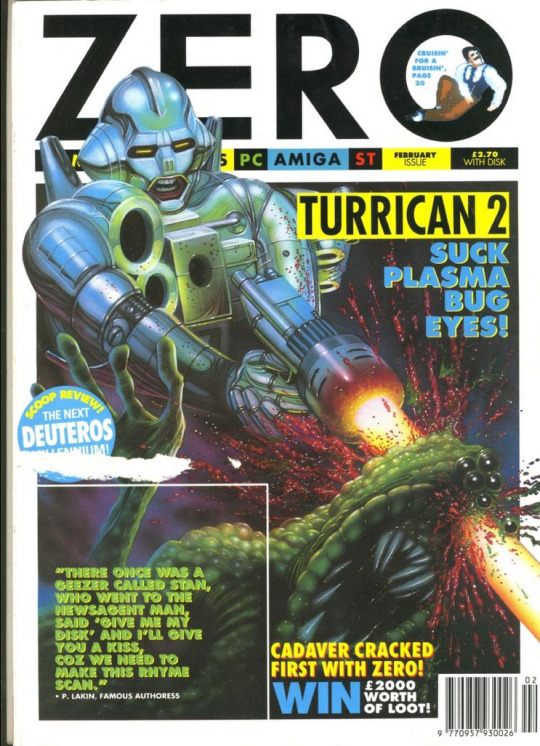
" Suck plasma, bug eyes! "
Zero Magazine n16 - February, 1991
#Zero Magazine#Rainbow Arts#Turrican#Turrican II : The Final Fight#Commodore#Commodore 64#C64#Amiga#Atari ST#ZX Spectrum#Sega Genesis#Game Boy
7 notes
·
View notes
Text

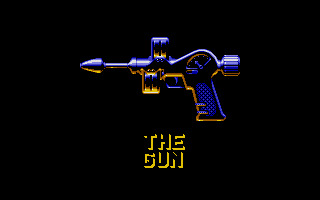
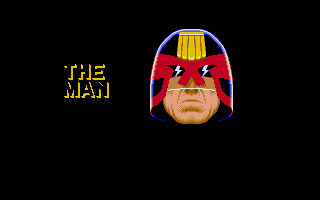
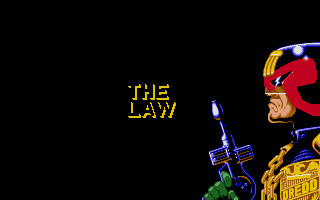
16-bit Judge Dredd
0 notes
Text
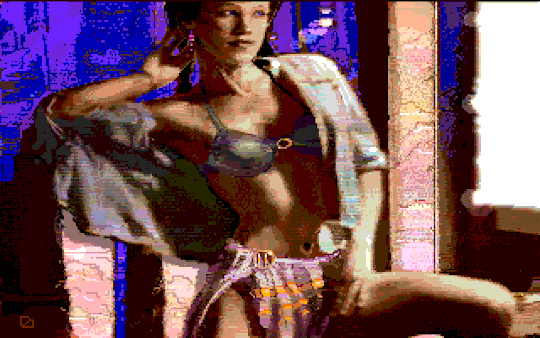
Darrell Anderson, Atari ST Spectrum 512 art, 1986
1 note
·
View note
Text

Peter Andrew Jones - The Kristal Atari ST Box Art (1988)
276 notes
·
View notes
Text
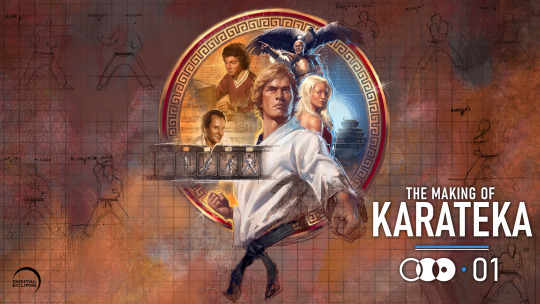
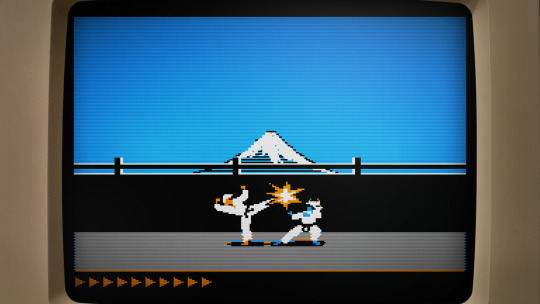
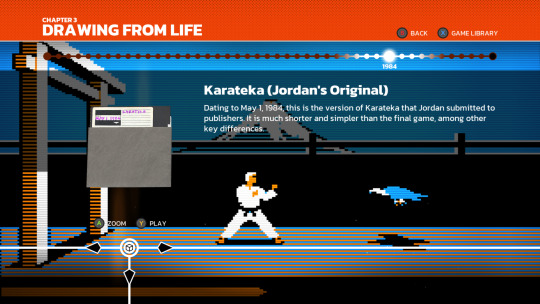


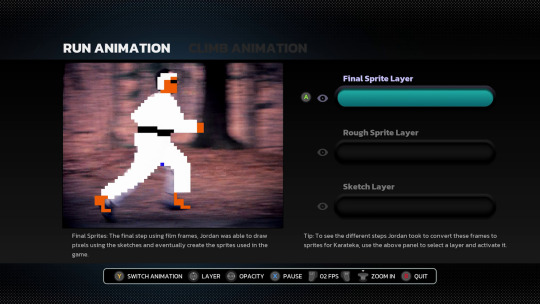
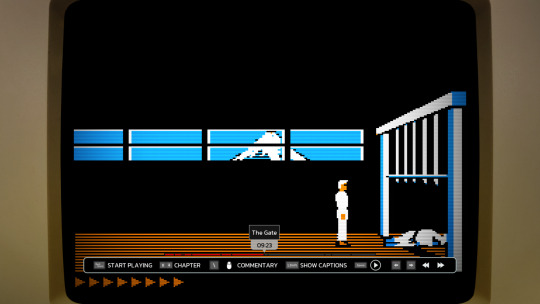
I never played Karateka in the 80s, but as a big fan of Prince of Persia and Jordan Mechner's journals, I was stoked to hear that an interactive documentary about Jordan's prototypical cinematic platformer was in the works by Digital Eclipse.
Released this week, The Making of Karateka on the surface looks like any other game you buy through Steam ($20, Windows-only), GOG, or whichever favorite store or console you prefer (available also for Xbox, PS4/5, Switch). Once the thing loads though, you really get 3 things: a documentary, the original Karateka, and a new remaster.
The documentary part is an audio-visual slideshow retelling Jordan's development story starting with his teenage years pitching his earlier title Deathbounce to the publishing house Brøderbund. It's an interesting look into the iterative process, seen through correspondence letters, journal entries, and many playable builds at various stages of completion. After we reach the eventual rejection of that title, Jordan comes back with a prototype of a visual-narrative experience unseen on home computers. We get to follow Karateka's full life cycle from pre- to post-production, ending with the conception of its sequel (which eventually turned into Prince of Persia). It's a real treasure trove! Fellow pixel artists will appreciate the many graph-paper sketches and interactive overlays of final game sprites compared to rotoscoped outlines and filmed footage. There are also video segments, from a comprehensive breakdown of the music to interviews with other developers reflecting on the impact Jordan's games had on their careers. You'll even encounter a fan letter signed by the one and only "John Romero, Disciple of the Great Jordan and worshipper of the Magnificent Mechner!" (I kid you not, you can't make this stuff up).
Perhaps just as crucial for an interactive documentary like this, you can launch any of the floppy disks in the emulator, trying out various iterations and ports of Karateka.

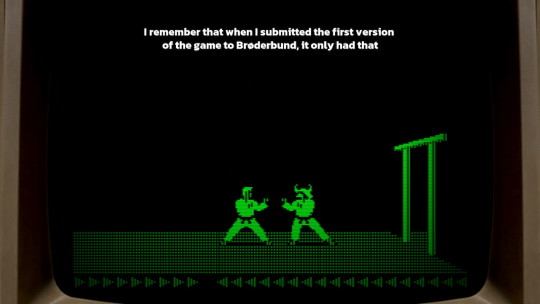
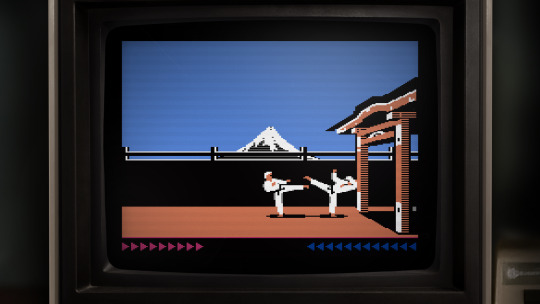
The emulation is fantastic and lets you fiddle with display settings (monochrome or color display, scanlines, pixel perfect or zoomed) as well as enhance the frame rate. You can even rewind the many deaths you will face if you've never played the game before (like me). If you spend some more time obsessing over the weird artifacts of the Apple II hi-res graphics, you might even go down the rabbit hole of realizing that on the Apple II you didn't really paint colors as much as you used different monochrome dithering patterns that the graphics display would then turn into 4 different hues. A fascinating learning experience if you include some of your own research online!
youtube
Add to this the Commodore 64 and the Atari 8-bit versions to compare how the graphics got adapted across the earlier ports and you have a nice way to relieve the mid-80s with a bit of help from modern emulation (I did beat the C64 version without rewinding though!). I'd love to see more art from the other remakes, especially the 16-bit Atari ST port, but I understand their decision to omit playable versions of those due to the lower quality on the gameplay side of the translations.
This brings us to the final part of the package, the modern remaster. Unlike the 2012 complete reimagining of the game (with 3D graphics and all), Digital Eclipse approached the remake as the ultimate port of the original to an imaginary system along the lines of a 90s VGA PC.

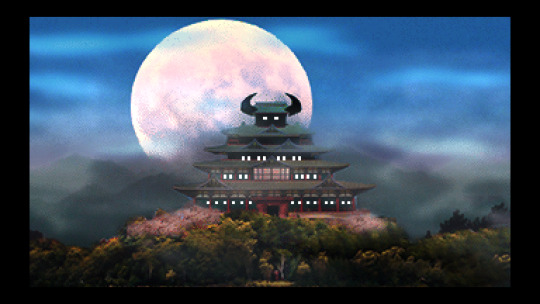


It's well done. Some of the fully-redrawn scenes are a bit overpainted for my taste (I'd prefer a pixel art rendition of the castle than a blurry photographic collage, although there were many games in the 90s that did take this approach), but the in-game graphics are really in style, including the smooth animations that are like one would imagine granted a beefier CPU. It's also a sort of director's cut with previously unseen scenes added, in particular, the battle with the leopard as a clever action-puzzle in the middle. The AI is unfortunately even less challenging than Jordan's implementation. As great as the 6-move fighting system could have been, you yet again resort to simply kicking away opponents as they tirelessly crawl into your range. There isn't even the nuance from the original where you were the one who had to approach some enemies with skilled timing. On the other hand, you now have optional goals and achievements that make the repetitive/easy combat work in your favor (stringing various combos, beating opponents or the level under a time limit …). As the Digital Eclipse president Mike Mika admits at the end of the welcome commentary mode, they didn't manage to achieve their perfect port, but they did come close.
In conclusion, I thoroughly enjoyed playing both the original as well as the remake and while the combat system lacks any sort of depth beneath its stunning animations, Karateka is instead a monumental experience for its presentation. Big characters with personality and realistic motion are displayed through cinematic camera cuts and story vignettes (3 years before Ron Gilbert came up with the word "cutscene"). There are details like animating the unfortunate falling off the cliff at the start of the game, or respectfully bowing to the first guard as they bow in return. Jordan's creative work is precious and worth the attention this release gifts it.
I highly recommend The Making of Karateka to all retro gamers and/or game developers for its immersive documentation which provides an experience that goes beyond the usual video documentaries. It's interactive—just like the subject it's talking about—something I want to see more in the future. And if the $20 by any chance seems high to you, consider that the original retailed at $35 (and that was in 1984 dollars).
youtube
77 notes
·
View notes
Text

Celal Kandemiroglu's cover art for Monster Business, released in 1991 for the Commodore Amiga and Atari ST.
75 notes
·
View notes
Text

Atari ST Box Art Wallpaper: Test Drive by Aurelien Vaillant aka Wasabim
#Atari#Atari ST#Accolade#Electronic Arts#Test Drive#wallpaper#graphic design#video games#retro gaming#retro computing#Wasabim#Aurelien Vaillant
9 notes
·
View notes
Text

Eight valiant characters fight to recover the Crown of the Emperor, stolen by the usurper Tarmon, Wizard of Thunder, and hidden in the ruins of Arghan (Christopher White box art for Wizard's Crown, "A Role-Playing Fantasy Game with Tactical Combat," Strategic Simulations, Inc, 1986, available in Commodore 64/128, Atari 8-bit and ST, DOS, and Apple II versions) Wizard's Crown was a relatively simple dungeon bash, but its combat system formed the basis of SSI's later Gold Box AD&D games.
#Wizard's Crown#Christopher White#Strategic Simulations Inc#1980s#fantasy#fantasy RPG#SSI#Atari#8 bit#Commodore 64#Apple II#DOS#computer game#castle#ruins#adventuring party
166 notes
·
View notes
Photo

Phantasie (ST)
0 notes
Video
youtube
Back Cover to AI Art Season 2 Compilation Part 2
Older video games were notorious for back cover descriptions that have nothing to do with the game so let's see what a text-to-image generator makes of these descriptions.
Season 2 of Back Cover to AI Art consists of a total of 54 issues With the majority being single-game entries, a handful will have multiple games covered with some being collections of games or trilogy releases.
1. Intro 00:00
2. Conquered Kingdoms Scenario Disk 1 (MS-DOS) 00:10
3. WarCraft II Tides of Darkness (MS-DOS) 02:42
4. Baldur's Gate II Shadows of Amn (Windows) 05:25
5. Ultima Online (Windows) 08:09
6. Lemmings 2 The Tribes (SNES) 10:51
7. Airball (Amiga) 13:34
8. Indiana Jones and the Staff of Kings (Wii) 16:27
9. Mario Hoops 3 on 3 (Nintendo DS) 19:10
10. Bedlam (PlayStation) 21:53
11. Rama (MS-DOS) 24:35
12. NHL 2001 (PlayStation) 27:18
13. Classic Text Adventure Masterpieces (DOS & Macintosh) 30:01
14. The Bureau XCOM Declassified (Windows) 33:04
15. Rogue (Atari ST) 35:46
16. Wargame Construction Set (Commodore 64) 38:30
17. Championship Surfer (Dreamcast) 41:12
18. The Prophecy (MS-DOS) 43:55
19. Zone of the Enders (PlayStation 2) 46:38
20. Avalon Hill's Squad Leader (Windows) 49:21
21. Wetlands (MS-DOS) 52:03
22. Varicella (Linux, MS-DOS, Windows, Windows 3,x, Browser) 54:46
23. Outro 57:17
YouTube (Gaming & AI Art)
https://www.youtube.com/@Zero2Zed
Twitter (Gaming & AI Art)
https://twitter.com/zero2zedGaming
Instagram (AI Art)
https://www.instagram.com/random_art_ai/
For more Back Cover to AI Art videos check out these playlists
Season 1 of Back Cover to AI Art
https://www.youtube.com/playlist?list=PLFJOZYl1h1CGhd82prEQGWAVxY3wuQlx3
Season 2 of Back Cover to AI Art
https://www.youtube.com/playlist?list=PLFJOZYl1h1CEdLNgql_n-7b20wZwo_yAD
For more compilation videos check out this playlist
https://www.youtube.com/playlist?list=PLFJOZYl1h1CEjFei9KXJ8xDIChQB8WLJd
#youtube#conquered kingdoms scenario disk 1#warcraft ii tides of darkness#baldur's gate ii shadows of amn#ai#ai art#generative ai#back cover#Ultima Online#lemmings 2 the tribes#airball#indiana jones and the staff of kings#artificial intelligence#digital art#mario hoops 3 on 3#rama#bedlam#nhl 2001#zone of the enders#ps2#nintendo ds#wii#windows#snes#ms-dos#atari st#amiga#dreamcast#commodore 64
1 note
·
View note
Photo

Line art by Bill Morrison for the cover of The Simpsons: Bart vs the World (NES, Amiga, Atari ST, Game Gear, SEGA Master System)
https://www.comicartfans.com/GalleryPiece.asp?Piece=1579921&GSub=193059
48 notes
·
View notes
